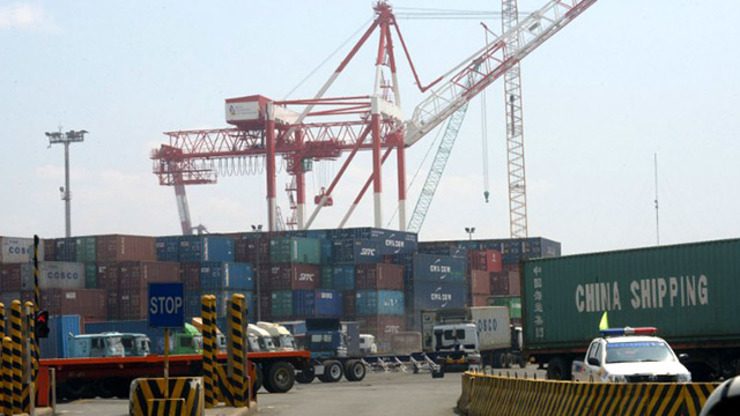SUMMARY
This is AI generated summarization, which may have errors. For context, always refer to the full article.

MANILA, Philippines – The ports of Manila are becoming less congested now, returning to normal levels despite the disruption in operations during Pope Francis’ visit in January, the Philippine Ports Authority (PPA) reported.
The Manila International Container Terminal (MICT) of International Container Terminal Services Incorporated (ICTSI) and the Manila South Harbor of Asian Terminals Incorporated (ATI) continued to improve to normal levels, said PPA general manager Juan Sta. Ana.
Both ports stood at 76.5% or 62,300 twenty-foot equivalent units (TEUs) as of Friday, February 20 – 3.5 percentage points lower than the 80% utilization level target set by the Cabinet Cluster on Port Congestion.
The yard utilization was between 75% and 79% since the papal visit from January 15 to 19, Sta. Ana said.
“The continued decline in the utilization level of the Manila ports is a clear manifestation of a healthy government and private sector partnership,” Sta. Ana said.
The combined number of vessels waiting at a pilot station also declined to 5, excluding vessels currently at berth with a combined total of 10 ships. Vessel turnaround time still remains at two days while the average yard productivity for both ports is at 18 moves per hour per crane.
As of end-June 2014, the number of laden containers piled up at the Manila ports totaled 85,000 TEUs, occupying about 104% of the yard of the ports. Total empty containers also reached a high of 22,000 TEUs.
The congestion was caused mainly by the daytime truck ban imposed by the City Government of Manila from February 24 to end-May, limiting the movement of cargoes in and out of the ports during night time only.
In September last year, Manila Mayor Joseph Estrada announced the lifting of the truck ban.
Win-win solution
The government would continue to work with the private sector to address the bottlenecks resulting in port congestion, Julianito Bucayan, Jr. Undersecretary of the Department of Transportation and Communications (DOTC) said.
Both sectors should recognize and effectively play their role into coming up with a win-win solution in addressing every concern affecting the Philippine supply chain, Bucayan said.
The private sector is a key factor in making the country move toward achieving its dream of being a major global player in the shipping and shipbuilding industries, he added.
“As we continue to move forward, both the government and the private sector agreed to continue to give timely solutions in order to prevent such situation to happen again,” Bucayan stressed.
The resolution for the Manila ports’ congestion would benefit the Brunei, Indonesia, Malaysia, and the Philippines – East ASEAN Growth Area (BIMP-EAGA), which offers “very good growth areas now and in the future,” Bucayan said.
In January this year, the World Bank said that limiting truck movement in preparation for the 2015 Asia-Pacific Economic Cooperation (APEC) meetings could worsen road and port congestion, and added that the worsening congestion results in significant productivity losses for the economy. – Rappler.com
Add a comment
How does this make you feel?
There are no comments yet. Add your comment to start the conversation.